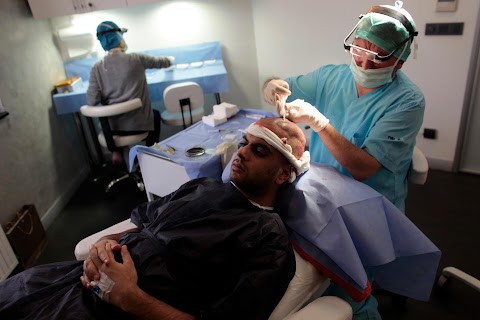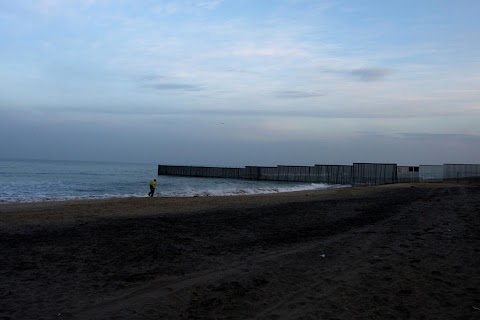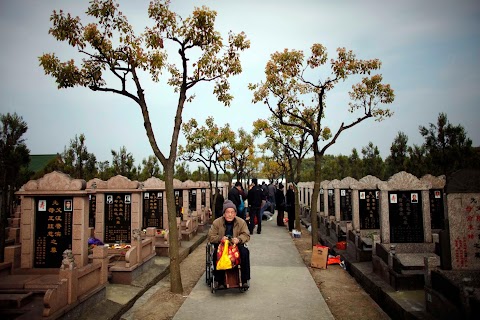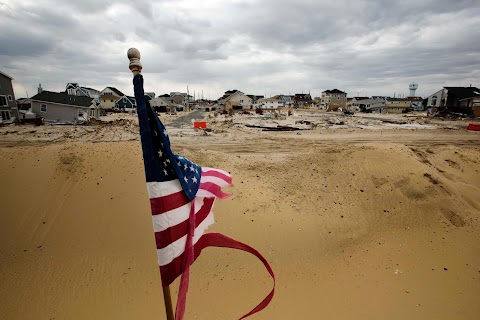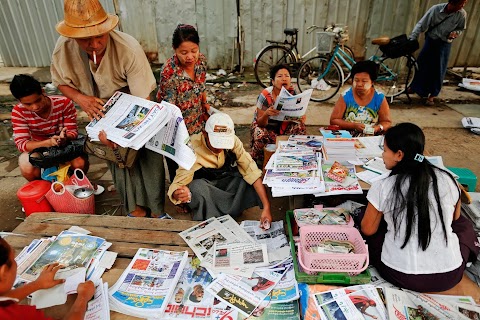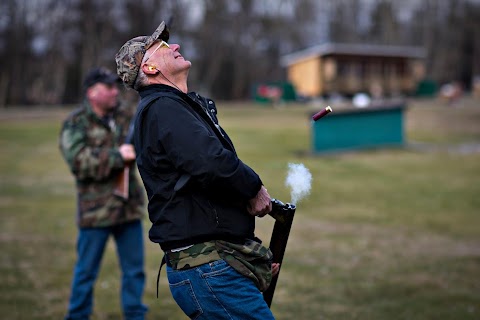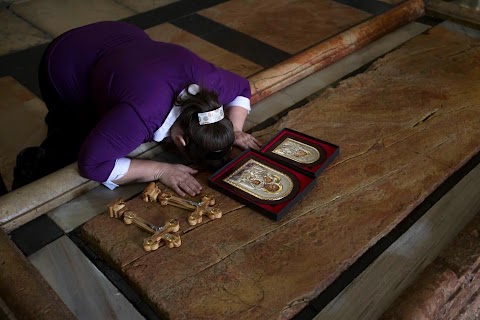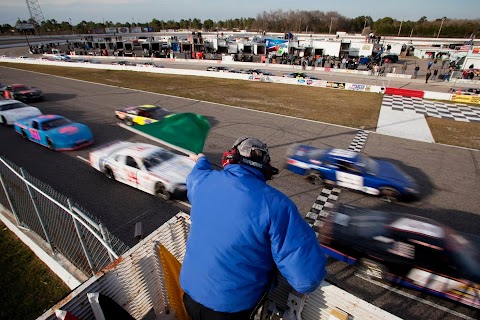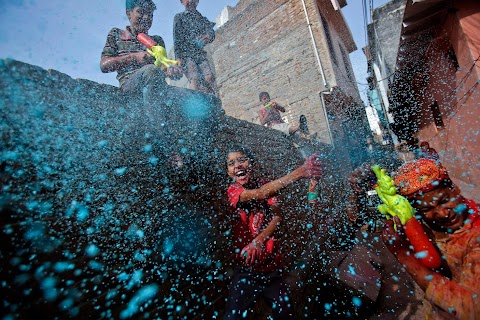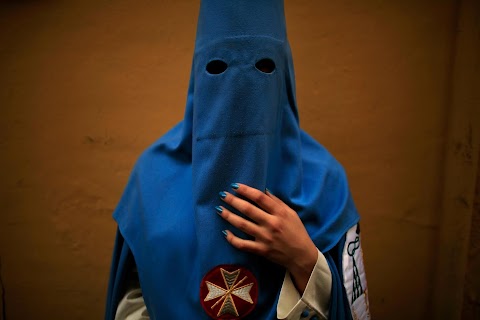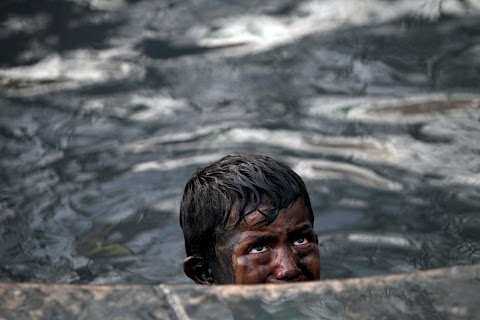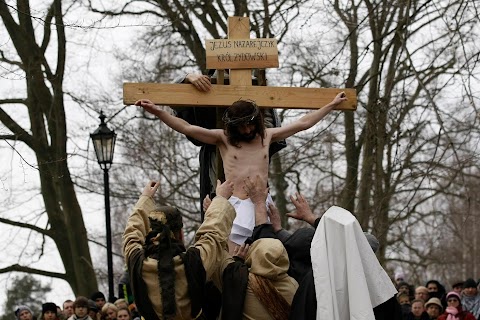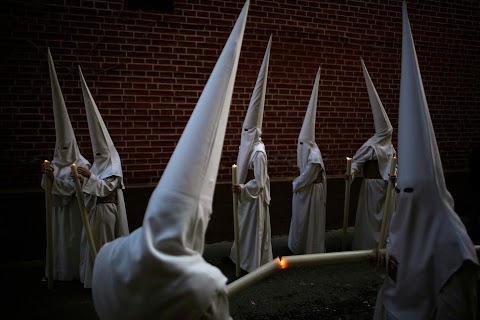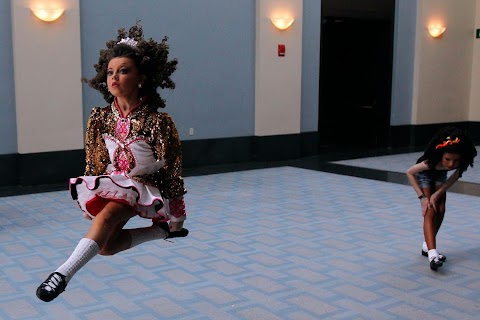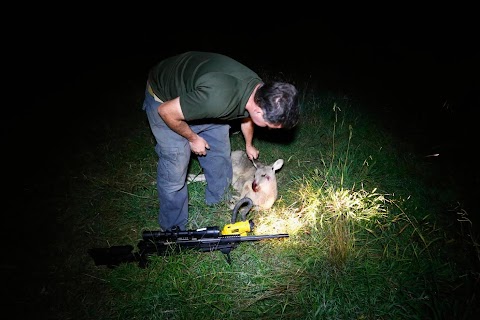
A night on the kangaroo cull
 David Gray
David Gray
Steven O'Donnell leans down to touch a bloodied kangaroo, which he has just shot with the .223 calibre rifle that now lies by its side.
O’Donnell does not kill the animals for food or sport. He is a government-licensed kangaroo shooter, working to keep down the numbers of Australia's tens of millions of kangaroos.

O'Donnell takes aim at a group of kangaroos on the outskirts of Canberra.
He is actually a professional plumber, but shoots kangaroos on local farmers' properties around three times a week as part of an annual cull, running from March until the end of July, which involves the legal shooting and tagging of thousands of eastern grey kangaroos a year in the Australian Capital Territory.
Limiting the number of kangaroos is supposed to help prevent them from harming the environment or competing with livestock for scarce food, but it remains a highly controversial and unpopular activity.
"I felt a horrible, weird anticipation as I waited for the inevitable sound and result that would shortly follow. CRACK!"
I met Steven O’Donnell at his house in the outer suburbs of Canberra just before dusk. He had agreed to take me on what could be described as one of Australia’s most unpopular and controversial activities – kangaroo shooting.
By day, Steve is a professional plumber, but by night he is a government-licensed kangaroo shooter whose job is to annually cull the kangaroo population, which is estimated at over 50 million.
When we met Steve, he was quick to explain why the thousands of Eastern Grey Kangaroos, known locally as “roos”, had to be culled; mobs of kangaroos can quickly damage the environment and compete with livestock for scarce food, impacting the livelihood of farmers.
But the argument Steve made that stood out most in my mind was this: “After Europeans settled in Australia some 220 years ago, they chopped down millions of trees, and created much more grassland, which the kangaroos have thrived on. As a result, their numbers have increased dramatically, and so in order to keep the natural balance for the environment to be sustainable (especially during a drought), their numbers have to be reduced. So actually, it’s our fault.”
I have heard many people say kangaroos are in “plague proportions”, but precise numbers vary dramatically depending on who you ask. According to government reports, however, around 5 million kangaroos are culled or killed for commercial quotas each year, a small percentage of the estimated 50 million.
Discussing all these points as we drove into the night, we finally entered a paddock located on the outskirts of Australia’s capital Canberra, where hundreds of roos are known to graze. We needed to be ready, so he stopped the truck just inside the paddock gate and attached a large spotlight to a makeshift brace that he screwed onto the driver’s side door. This allowed Steve to drive and point the spotlight in search of grazing kangaroos in the dark. Safely resting in his lap was a .223 calibre rifle, its barrel pointing out the window, for fast and easy access.
It didn’t take long before we spotted a group of around a dozen roos. But there was just one problem, the kangaroos were on the passenger’s side (my side) of the truck. Steve climbed onto the back of the truck and used a sandbag to steady his rifle on the roof. Pointing the spotlight directly at the mob, the kangaroos all stood upright, dazzled by the light.
My gaze was aimed directly at the kangaroo standing at the end of the beam of light. I felt a horrible, weird anticipation as I waited for the inevitable sound and result that would shortly follow. CRACK! The distinctive, piercing sound of a rifle shot finally broke the silence. I heard a thud immediately after the shot, as the bullet entered the roo, and it slumped down, hitting the ground without a struggle. Steve repeated this process three times within the space of just one minute, and all three shots killed their target.
As the mob of kangaroos hopped away they found Steve’s spotlight irresistible and stopped out of curiosity — a fatal move. Steve hit all his targets precisely and quickly, proving that what he told me earlier was true; every licensed kangaroo shooter goes through a rigorous set of tests to make sure they are not only crack shots, but that they know precisely what target they are hitting. They must also abide by very strict rules and conditions, with the number one rule being that a “headshot” must be obtained so as to minimise the animal’s pain and suffering. Of all the roos Steve shot that night, of which there were seven in total, he managed to make a “headshot” every time. An impressive show of marksmanship.
Once the kangaroos had scattered and were out of range, Steve tagged each dead roo. This meant walking across the dark paddock and fixing an official tag to their bodies that rangers would inspect later so that the quota of roos for that area was not exceeded. After 3 hours, Steve was satisfied with his night’s work. We drove out the gate and were soon back in suburbia.
I couldn’t help but feel a little saddened by what I had just witnessed, and reflected on what an unusual experience it had been. I have never liked guns, nor the thought of killing anything. But what kept ringing through my head as we drove through the quiet suburban streets at midnight was Steve’s argument – that all this was actually “our fault.”
Sadly perhaps, a necessary evil. But definitely, and always, a controversial one.
Slideshow

Steven O'Donnell's .223 calibre rifle sits on the seat of his truck as he attaches a spotlight to the vehicle. The bright light is used to dazzle the kangaroos and allow O’Donnell to take aim.

O'Donnell re-loads bullets into his gun after shooting a number of kangaroos.

He aims his spotlight and rifle from the window of his truck at a group of the animals in a paddock.

He goes to tag kangaroos he has just shot, as the spotlight glows behind him.

O'Donnell rests his rifle on the bonnet of his truck as he takes aim.

He goes to tag a kangaroo he has just killed.

He drives his truck through a paddock with his .223 calibre rifle resting on the window.
